THE MOVIE
What you may or may not know, the film director Ridley Scott, the director of the first Alien movie and later on Blade Runner and many other Hollywood blockbuster movies, was already a superstar when he started making movies.
He studied art & film at the West Hartlepool College and began his career doing Television for the BBC in the 1960s. Later on he and his brother Tony Scott (who also became a famous Hollywood director and made a bunch of movies with Denzel Washington) founded their own company and Ridley Scott made top commercials through the late Sixtees and the 1970s.
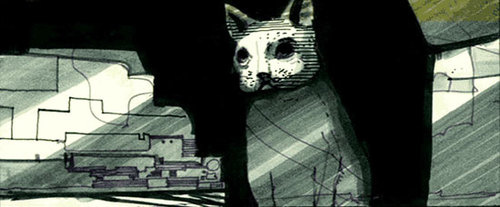
"He is a visual guy" is something everyone who worked with him would tell you. He draws. He draws a lot. He has the abiltiy to express his film vision through a pen & piece of paper and that is a powerful tool for a director. He is doing his own storyboards (the scene-by-scene drawings you sometimes see) to flesh out the movie from early ideas to what his set director and director of photography will have to turn into life.
THE ARTISTS
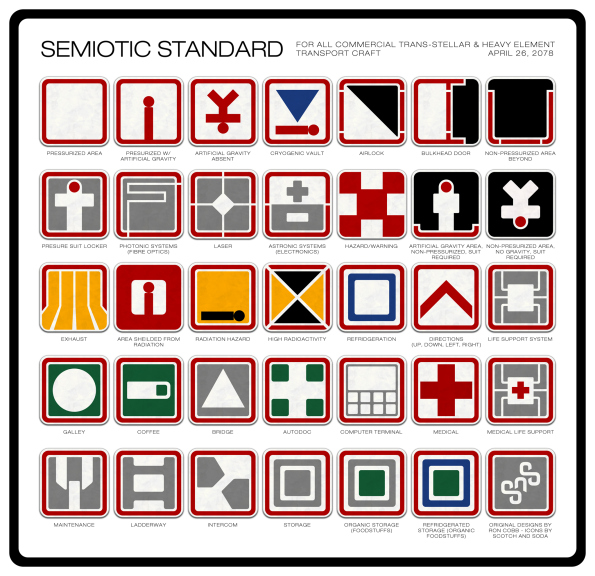
The legend goes, that Ridley Scott was browsing through the art books of Hans Rudi Giger, an already famous but certainly obscure Swiss artist. While they contacted Giger and he was willing to cooperate in a movie production, the producers of the Alien movie hired well known Science Fictions artists, to do concept art on the movie.
The facts are, Dan O'Bannon and Ron Shusett, who were trying to pitch their Alien movie story to the studios in Hollywood, asked Ron Cobb to make some illustrations for them, to help pitch the movie.
Once they found a producer, they immediately tried to convince them to hire their favorite artists for this film project.
Among them were Chris Foss (known for his space ship designs for book illustrations), French comic book star & graphic novel artist Jean Giraud, also known as Moebius (the man who created the visual design of 'The 5th Element', who also worked on an early version of Dune, the movie. He also illustrated a great Science Fiction story called 'The Long Tomorrow', written by Dan O'Bannon & Ron Shusett for Metal Hurlant/Heavy Metal Magazine) and Ron Cobb, who started his career as a young kid at Disney. He earned his film credits by working on the spaceship for Dark Star (1973) and did some work on Star Wars too (his later credentials include John Milius Conan movie, True Lies, E.T. and the new Alien movie "Leviathan", working again with Ridley Scott.
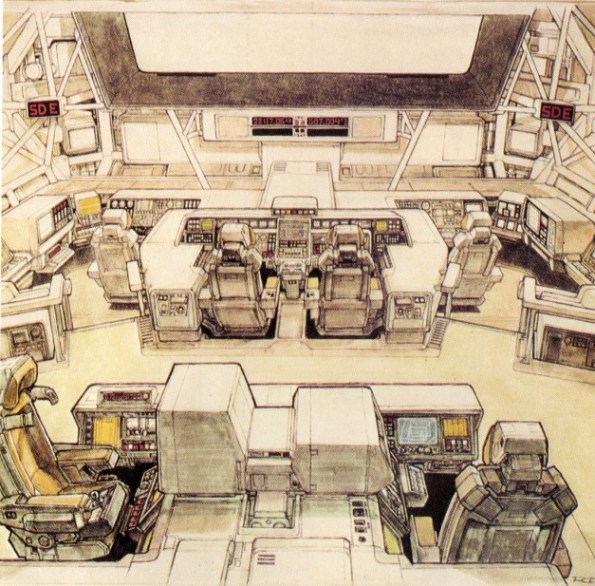
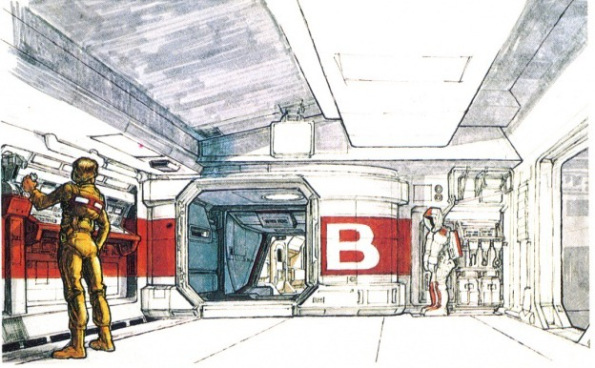
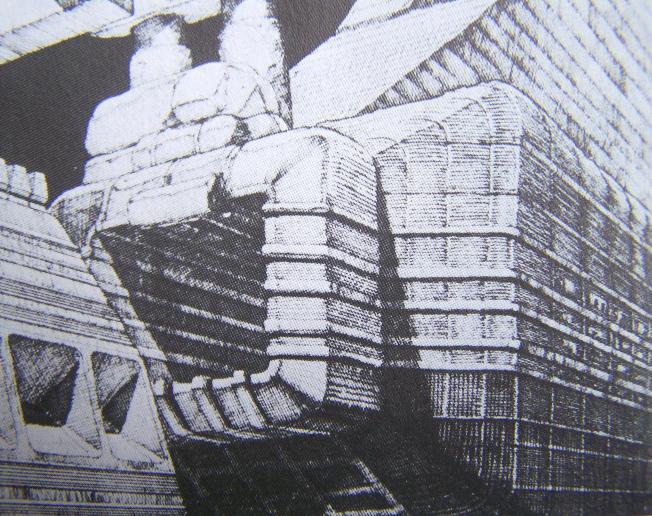
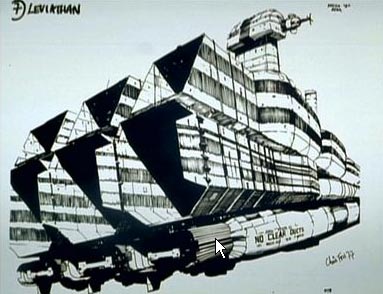
If you can find it (and afford it), I recommend a Ron Cobb art book from the 1980s which had tons of his film drawings and illustrations. It has a lot of drawings and sketches of the interior design of the Nostromo and if you have seen the movie you know how much the video game by Creative Assembly stayed true to that design. Next to Syd Mead - another famous Graphic & Industrial Designer (who worked with Kubrick on "2001: A Space Odyssey"), Ron Cobb was 'the guy' for futuristic interior design.
THE GAME
The art style follows the visual concept art of Ron Cobb and the vision of Ridley Scott and his 1979 Alien movie closely, yet manages to not copy it, but re-invent it, creatively. They even recreated the semiotic standard icons Ron Cobb created for the original movie, into the video game (look at your achievement icons).
It embraces the 1970's and 80's technology and replicates it into the future. You see and hear(!) computer tape machines, neon-tubes firing up/flickering, old harddrives spinning, CRT monitors, etc, etc.
Using advanced shader and DX11 tech & features (DirectCompute), the graphics rendering serves to mimic typical movie and camera lens effects and so creating depth of space and atmosphere. but also recreating a retro 'look & feel' of the original movie. Darkness is interrupted by dynamic (deferred) lighting effects and volumetric fog/steam. Chromatic abberation serves to 'blur' the look, planar reflections help to set the mood reflecting single light sources in a room or corridor, ambient occlusion helps selliing the plasticity of the objects and the architecture of the space ships and space station, Depth of Field and Bokeh, used to the most intense cinematic effects, having your point of view suddenly out of focus, etc. You enter a dark room and slowly the neon lights start to lighten it up, gradually progressing through space, making you 'see' how long the corridor is. Music and ambient sound plays a huge role in selling this effects, too. All rendering tricks and effects are used to make the 3D virtual space believable and make it look 'real' and successfully resemble the 'old' movie, at the same time.
Following the movie aesthetic of old, it is also a concept pulling away from the often 'clean' look of video game level design, no matter how much lighting tricks some developers try to implement. There is always something sterile about many 3D spaces. Using modern technology to get away from the 'clean' look is still rare. Lense flare effects alone cannot cut it. Equally, many Unreal Engine games still carry the 'shiny meat balls' effect to this day, unable to turn it off.
Ridley Scott followed the 'spaceships are not clean' concept of George Lucas' first Star Wars movie. Both were a reaction to the immense success and influence Stanley Kubrick's "2001 - A Space Odyssey' had. While Kubricks's vision of the future was all 'clean' and filled with futuristic 1960's designer chairs (the kind, you cannot sit in, comfortably), Lucas and Scott wanted to show the opposite. 'Dirty' space ships and corridors, 'every day' future technology, which looked used and used up.
Btw, many aspects and visual effects reminded me of Doom 3 when used with the Sikkmod, but in the most positive way. (see some screenshots from my former posts or googlebing in general 'doom3+sikkmod'). The most memorable part of Doom 3, was the opening sequence (for me). Exploring space, wandering around. Most of all 3D virtual worlds are a 'spacial art form'.
Some spoiler-free screenshots from the game:

THE ARTISTS
Creative Lead: Alister Hope
Lead Programmer: Clive Gratton
Lead Artist: Jude Bond
Lead Designers: Garry Napper, Clive Lindop
Lead Level Design: Iain Wright
Lead Environment Artist: Mark Radcliffe, Paul Abbott
Lead Technical Artist: Andrew Oakley
Lead VFX Artist: Howard Rayner
Lead Lighting Artist: Ben Hutchings
Lead Engine Programmer: Michael Bailey
etc, etc, etc ...



























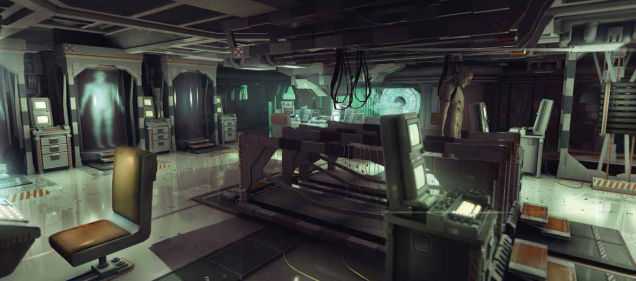
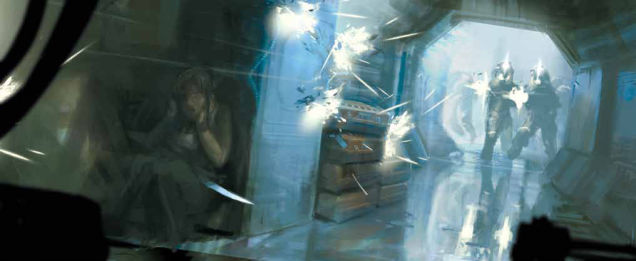
Log in to comment